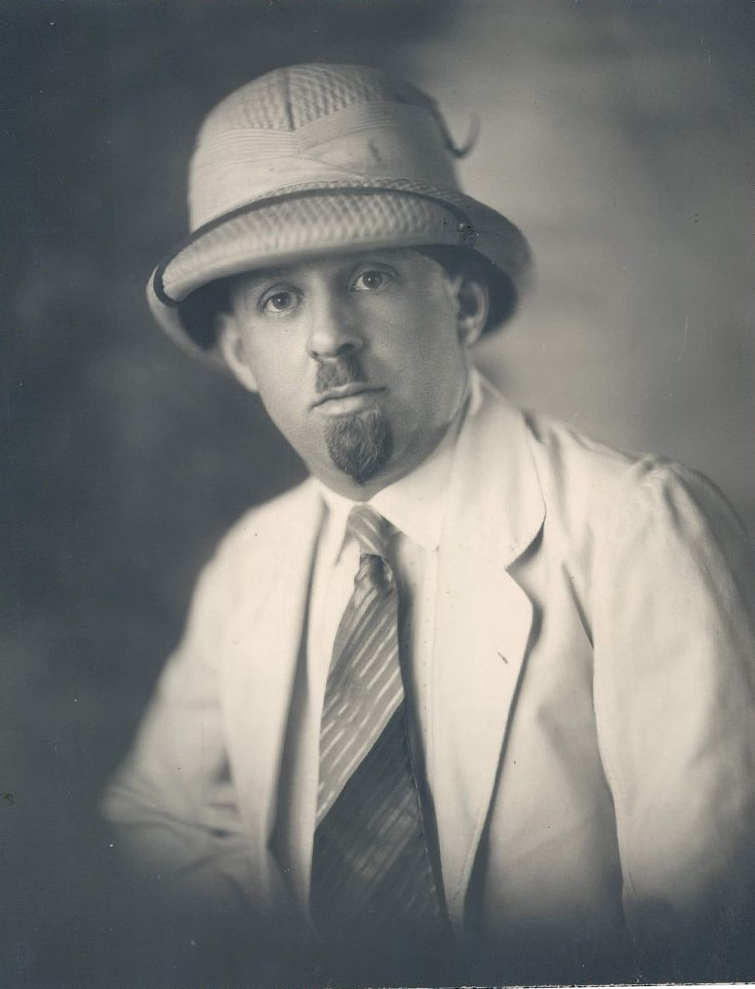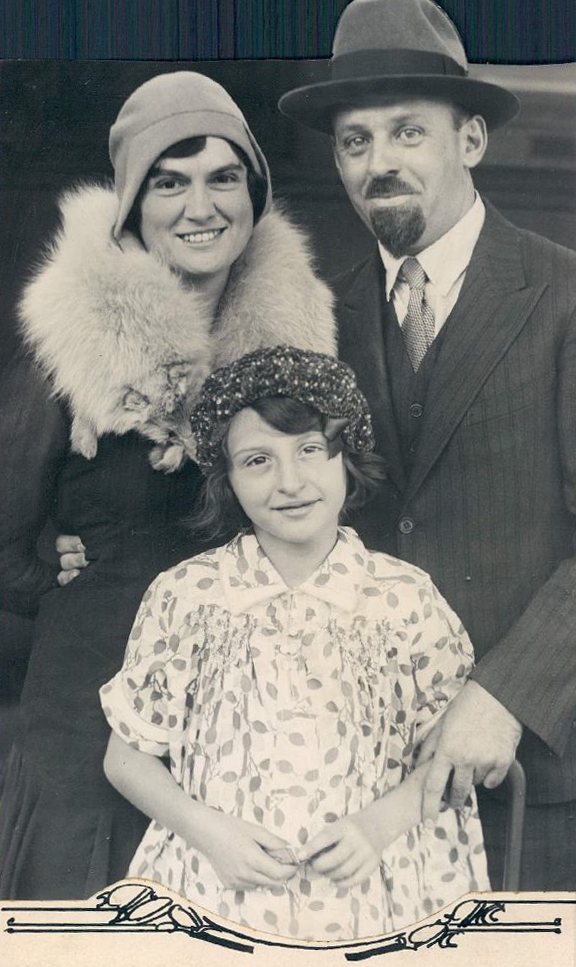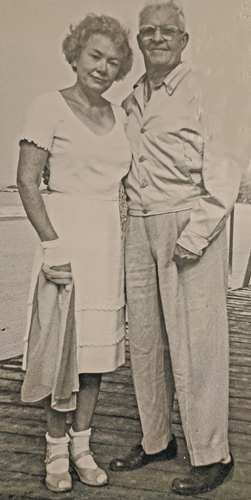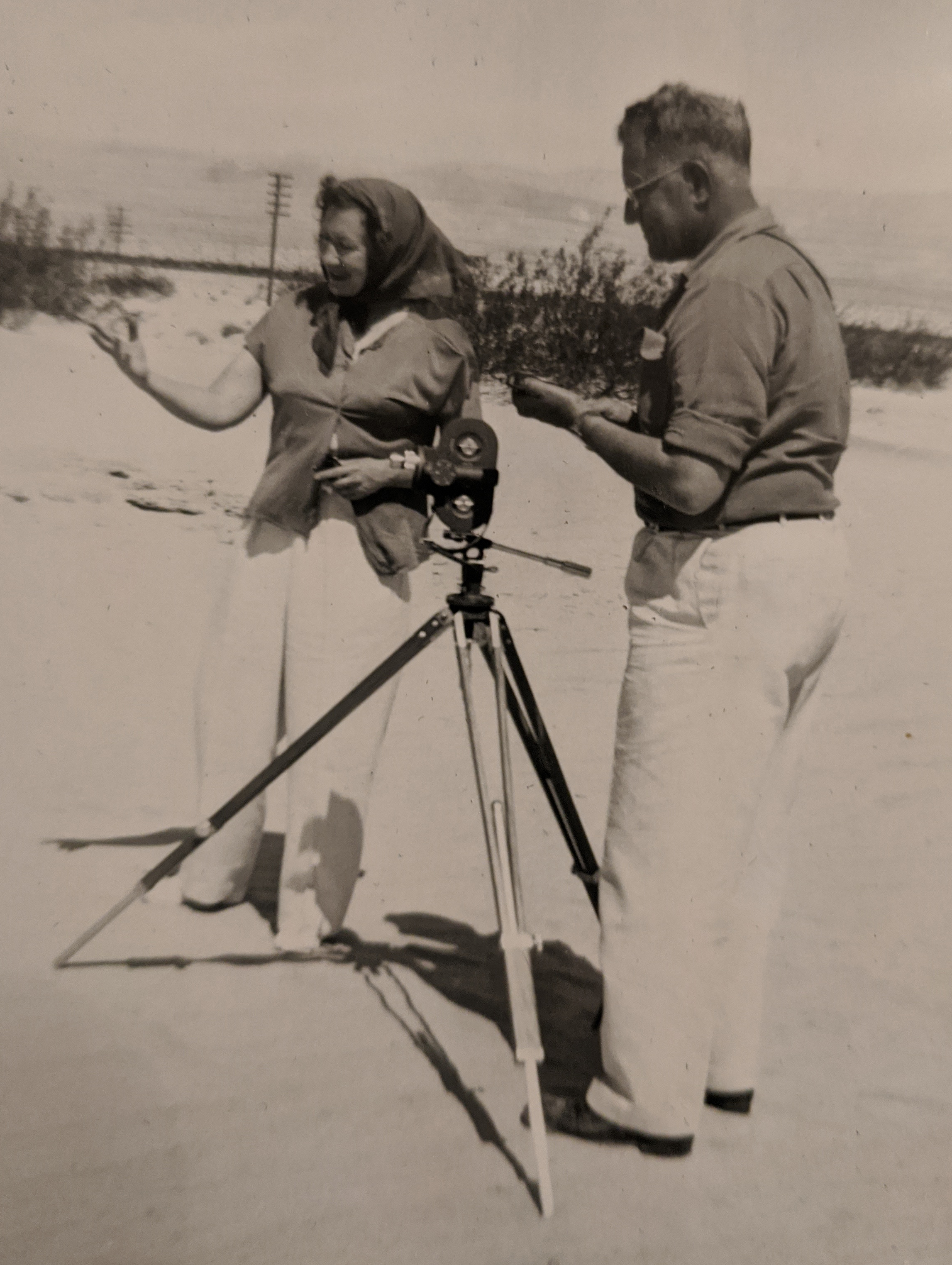

Paul Hoefler ca. 1930
Maude, Paul, and Jacqueline Hoefler, 1929
Paul Louis Hoefler (1893-1982) achieved notoriety for his feature film,
Africa Speaks (1930) and his book of the same name. From the 1950s to the
mid-1980s, he reached new audiences through his Paul Hoefler Productions,
contributing more than eighty 16mm classroom films, in English and Spanish, on
world geographical subjects.
The son of a hotelier, Hoefler was born September 6, 1893 in Spokane,
Washington, later living in
a number of cities in California, New York, and Texas in his youth. Disliking
his law studies while residing in Los Angeles, he worked as a cameraman and in
other capacities for motion picture companies filming Westerns and slapstick
comedies in Southern California, for directors including Thomas H. Ince and
Frank Montgomery. He worked on additional films in Santa Rosa, where he also
shot still photos for horticulturist Luther Burbank, and owned a movie theater
in Eureka, California.
He moved to Denver, Colorado in 1915 at the age of 22, opening a small motion
picture and photography business. His many projects included aerial shots of
Pikes Peak, the Pikes Peak Hill Climb auto races, and a personal film made for
Chicago mobsters Deon O’Banion and Louis “Diamond Jack” Alterie on a Colorado
dude ranch. He served as a cameraman on the 1925 feature film The Scarlet
West (dir. John G. Adolfi), filmed in Dolores, Colorado, starring Clara Bow
and featuring Hoefler’s wife Maude as The Wife.
Fascinated by Africa from an early age, Hoefler was well-read on the subject
when he set out for his first trip to Africa on the Denver African Expedition,
in July, 1925, underwritten by a number of Denver businessmen. Landing in Cape
Town, accompanied by a team including Denver adventurer Cecil Ernest Cadle
(1886-1944) and South African archaeologist A.J.H. Goodwin (1900-1959), he
traveled to the Kalahari Desert, documented the San Bushmen on still and motion
picture film, visited Ovamboland, returned to Cape Town, and sailed home from
Durban. His eight reel silent film The Bushmen (1927) is deposited in the
South African Film, Video, and Sound Archive.
In July 1928, he returned to Africa, leading the Colorado African Expedition.
Said to be the first transcontinental crossing of Africa by motor truck, the
14-month excursion from Mombasa, Kenya to Lagos, Nigeria touched Lake Victoria,
the Congo, Lake Chad, and the Pygmies of the Ituri Forest along the way. His
469-page book Africa Speaks: A Story of Adventure (1931) describes the
expedition.
In 1931-1932, he led the Colorado Asiatic Expedition to India and Sri Lanka
(Ceylon), bringing along wife Maude and young daughter Jacqueline (1921? –
2015).
By 1936, he was operating Paul L Hoefler’s World Picture Service, offering
photographs of African, Asia, and the Western United States to periodicals and
educational companies and organizations. During World War II, he served with the
U.S. Army Air Force, shooting aerial photographs in eastern Africa, later taking
on the role of AAF Public Relations Director in the Middle East.
After the war, he founded Paul L. Hoefler Productions in Los Angeles, moving to
La Jolla, California in approximately 1961. He produced more than eighty 16mm
classroom academic films on world subjects, a number of them distributed by
friend Walt Disney’s Buena Vista subsidiary. Hoefler filmed his own material as
well as producing films made by other cinematographer/editors, including Fredric
Christian (Ethiopia), Willard C. Hahn (Pacific,
South America), Ted Phillips (India), and Jackson Winter (Middle East).
He served on the board of the San Diego Zoo, responsible for bringing an African
white rhino to the collection.
Hoefler married three times, first to Maude B. Bush (b. 1902), his last to
Sylvia P. Spencer Christian in 1967, widow of filmmaker/photographer Frederic Christian, who made
the film Ethiopia: Africa's Ancient Kingdom (1961) for Hoefler.


Sylvia and Fred Christian, 1956
Sylvia and Fred shooting in Palm Springs
Sylvia and Frederic Christian made geographical silent films in a number of
countries, narrating them on a nationwide lecture circuit, represented by firms
including John West’s National School Assemblies and Southern School Assemblies,
Antrim in Philadelphia, and Harold R. Peat, in New York City. Their film
River of No Return (1943)
depicted a perilous trip through the Salmon River on a hand-built boat.
Sylvia Spencer (1901-1990), daughter of well-known balloonist Stanley Spencer,
met Frederic Gerard Christian (1900-1966) in a small town outside Spokane,
Washington while he was engaged in a still photo project for a railroad.
https://en.wikipedia.org/wiki/Stanley_Spencer_(aeronaut)
They married, eventually moving to Laguna Beach. Their photo studio specializing
in high school yearbook photography provided the means to travel internationally
and produce their lecture films, made primarily in Europe and South America.
They counted Haile Selassie, who invited them to make a film in Ethiopia,
Ethiopia: Africa's Ancient
Kingdom (1961, 17m, Paul Hoefler Productions) among their friends.
From 1946 through 1956, the Christians' film lectures were provided by their
niece, Joyce Hale.
Sylvia Christian married Paul Hoefler after Frederic’s death in 1966. Paul
Hoefler passed away in 1982, Sylvia Christian Hoefler in 1990. Paul Hoefler’s
daughter Jacqueline Hoefler Troyer passed way in approximately 2010. The
Christians had no children.
There is little publicly available informationon Paul Hoefler (or Frederic
and Sylvia Christian) today. Robert J. Gordon’s book Picturing Bushmen: The
Denver African Expedition of 1925 (1997) makes extensive use of Hoefler’s
diaries, written on the trip. His papers are archived in the Denver Museum of
Nature & Science,
Alfred M.
Bailey Library and Archives, and a number of his photographs on African and South Asian
subjects are in the collection of the Phoebe A. Hearst Museum of Anthropology in
Berkeley, California.
In the 1980s, Hoefler described the first three decades of his life on a tape
recording, documenting his earliest memories in the 1890s through the Denver
African Expedition of 1928. An edited transcript is published here for the first
time. See also Paul L. Hoefler’s filmography.
Please contact us if you have
further information on Paul Hoefler or Frederic and Sylvia Christian.